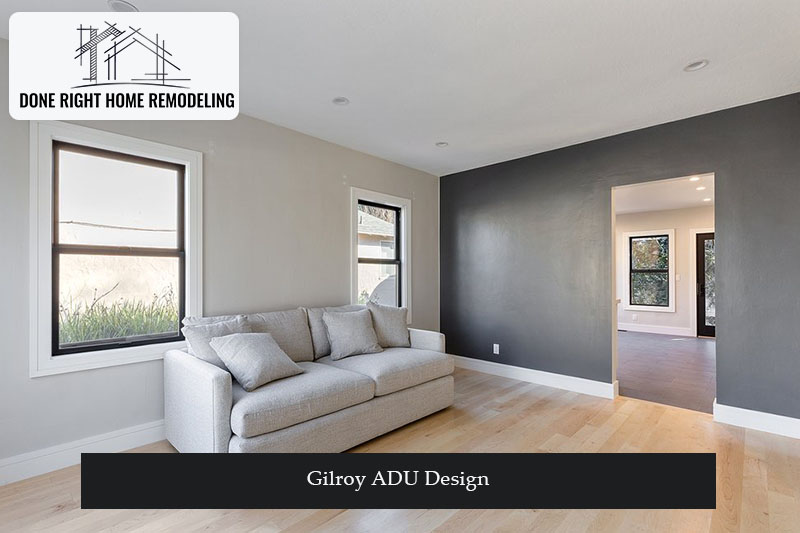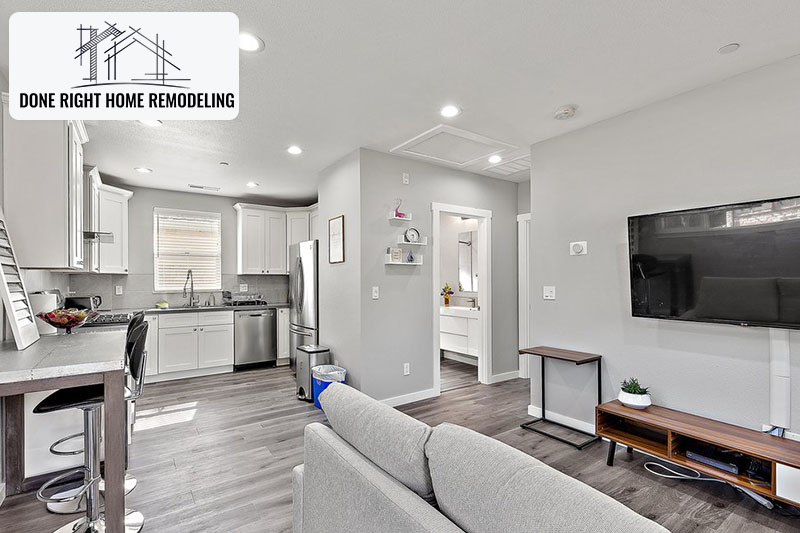LIC #: 1002689
As the popularity of ADU continues to rise, so does the need of professional Gilroy ADU design services to create a beautiful and practical units that fits seamlessly on your property.

When it comes to ADU design, you must understand the design requirements and determine various customizable options and how to maximize the vertical space within the unit.
As Gilroy ADU builders, Done Right Home Remodeling has the experience and expertise to ensure the ADU design meets your preferences and local building codes.
Many properties in Gilroy are zoned to add habitable units in extra yard space, allowing you to build ADU in your backyard.
The general design requirements for building an ADU in Gilroy are summarized below:
Our ADU design-and-build experts in Gilroy offer custom designs for different site conditions (steep slope, lots of trees, tight space, etc.), if want something custom-built, or building for an aging family member to fit their needs.
Some custom ADU ideas include the following possibilities:
ADU carve-out is created by carving out a distinct space with its entrance, living, kitchen, and sleeping areas within your existing home.
ADU addition is the construction of a new ADU with its entrance, living, kitchen, and sleeping areas on your property. ADU additions can include studio, one-bedroom, and two-bedroom.
We can help you evaluate design options to meet your needs by converting an existing structure on your property into a livable space. These could be a garage, a basement, or an attic.
| Custom ADU Design | |
| Advantages | Disadvantages |
| You get a project designed specifically for your needs that fulfills your goals and ideas. | Design fees are higher. |
| Style is variable based on your taste. | Hard to figure out an accurate cost estimate until the design work is complete. |
| The design process can be fun as we work through various layouts and design ideas. | You don’t know what the project will look like until you hire a designer and work through the iterative design process. |
| Options are limitless – each aspect can be tailored to you. | The design process takes a significant time to work through all the various decisions. |
High ceilings in small spaces can make a huge difference. Here are a few of our smart ideas to make a small unit just as stylish and spacious as larger homes.
To create a cozier atmosphere, think horizontally by painting your ceiling darker than your walls, adding a chair rail, using shorter window treatments, and creating strong horizontal influences with shelving and wall art groupings.
Opt for tall shelves, bookcases, or storage units extending towards the ceiling to organize your items vertically, keeping the floor clear.
Plan the layout of the ADU to allow efficient vertical circulation, for instance, compact spiral staircases to connect different levels of the ADU while minimizing the footprint.
Consider the vertical orientation of the windows to maximize natural light and draw the eye upwards, making the space feel more open and airier.
Incorporate loft spaces within your ADU design to serve as additional sleeping areas, home offices, or storage spaces to maximize vertical space in the ADU.
Consider incorporating built-in storage and furniture that are tailored to the vertical dimension of the ADU to optimize the vertical space while providing a seamless and cohesive design.

Ready to turn your ADU dreams into reality? Contact us today to help you design a perfect ADU and start building your future!
You can customize the structural design of the ADU to meet your preferences. Done Right Home Remodeling can help you incorporate design elements as open floor plans, high ceilings, and unique roof designs to ensure structural integrity.
ADU design process involves assessing capacity, determining load-bearing requirements, and meeting codes to ensure a safe and structurally sound ADU.
The pre-approved ADU design should already meet the Gilroy building codes and regulations. However, you must review the design documentation to confirm compliance before construction.
Modular ADUs are designed with energy efficiency in mind, incorporating features like insulation, energy-efficient windows, HVAC systems, and sustainable materials and construction practices.